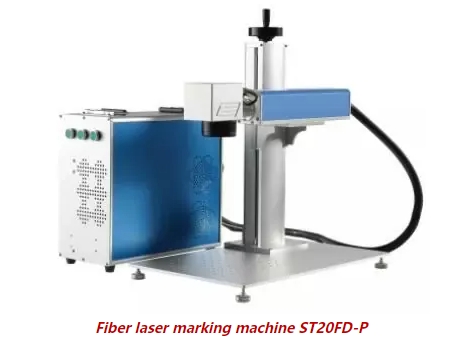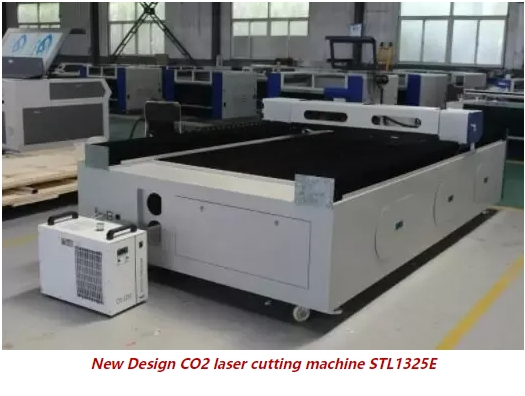

Over a relatively short period of time we have seen exponential advances in Fiber laser technology used for flat sheet metal cutting. In just five years, Fiber lasers achieved the 4kW cutting threshold that took CO2 lasers approximately four times as long to reach. After ten years, Fiber lasers have achieved the 15kW power level for cutting. In all fairness, Fiber lasers – some exceeding 20kW – have been used by other industries for many years in applications other than sheet metal cutting.

What Is a Fiber Laser?
A Fiber Laser is simply a term used for the fiber optic delivery method of bringing the intense and amplified light source to the cutting head of the laser machine. The term does not specify how the light source is created (which is different then that of CO2 resonators). The fiber beam delivery method greatly simplified the process of building a laser and as such many machines came to the market at greatly reduced prices.
How Does a Fiber Laser Work?
The fiber receives the light source from the resonator of the laser cutting machine and delivered it to the cutting head which is controlled by the CNC. In the cutting head the laser is emitted form the end of the fiber optic cable and refocused through a series of focal lenses into a near perfect dot on the material's surface. Purged with cutting gasses such as NO2 and O2 around the laser the material to be machined is quickly vaporized in the intense heart and blown away as particles of dust.
Advantages of a Fiber Laser
● Investment Costs: As the solid state laser technology becomes increasingly more popular the cost of the systems are declining. As an example a well equipped domestic built fiber laser cutting system can be purchased starting at well under 300K
● Maintenance: Without the Beam Path Delivery System and its myriad use of mirrors, bellows, gasses wetc the Fiber laser (specifically the solid state resonator type) has greatly reduced the amount of maintenance required and as such the costs associated with that maintenance.
● Speed: In the race of Fiber Lasers vs. CO2 Lasers in thin materials there is simply no comparison. Fiber is double to triple the speed in gage materials.
● Operating Costs: With lower power requirements for the resonator and lower cooling requirements they power consumption required for a fiber laser is approximately 1/3rd that of it's CO2 cousin. Coupled with less Maintenance, less consumables and faster cutting make the per/part costs on a fiber laser exceedingly advantageous.
Disadvantages of a Fiber Laser
● Thick Material Finish: One of the advantages of CO2 lasers is the finishes obtained in thicker materials, especially Stainless Steel and Aluminum. While Fiber Laser technology is not far off as of the writing of this article today CO2 is still the leader in this area.
● Overall Flexibility: As we previously mentioned, CO2 Laser have more flexibility to cut through a wider range of materials, especially non metals. While Fiber Technology is catching up and in fact can cut Brass and Copper out of the box (CO2 Lasers struggle with these materials greatly) they do have limits to their use especially in non-metal applications.
● Known Technology/Comfort Level: If you are currently running one or more CO2 laser systems in your facility you're likely to sway very heavily in that technology direction initially as it is the ‘demon’ you know vs. the one you do not.

What Is a CO2 Laser?
A CO2 laser really refers to the method of generation of the laser itself. A resonator, purged with CO2 gasses under high velocity (turbos or blowers) used a variety of methods to split the ions of light particles (typically RF or DC excitement) causing the light particles to collide into each other and split at an even greater intervals.
How Does a CO2 Laser Work?
Once the CO2 Resonator has created enough light it is delivered in a different manner then the fiber optic method. The beam is delivered via a process of reflection and refocusing down a convoluted path called a "beam path delivery system" which is purged with protected "laz gasses" to keep the path pure and clean and free from dust that would interfere with the delivery of the full intensity of the laser. Once the laser is reflected to the cutting head it is refocused and emitted in the same manner as the Fiber machines would utilizing a series of lenses to refocus and a shield of high velocity cutting gasses to purge the machined path.
Advantages of a CO2 Laser
● Finish: CO2 Lasers generally produce better edge quality on plate stainless and aluminum workpieces.
● Flexibility: CO2 Lasers offer the flexibility across a range of laser applications including non-metals.
● Known Technology: As CO2 Lasers have been around for some 30+ Years the technology, and thus the results are quite predictable. This offers a good level of assurance to a user.
Disadvantages of a CO2 Laser
● Operating Costs: Aside from the mirrors, lenses bellows and las gasses required to keep the beam path delivery system pure and clean, the power consumption costs are 70% higher as the CO2 Resonator, Blower, chiller etc require much more power.
● Maintenance: All of the above mentioned components of the beam path delivery system require maintenance which can not only be disruptive to manufacturing but also very costly.
● Speed: In thin materials a CO2 Laser just can’t compete against a fiber. As an example a 4KW CO2 in 16 GA Mild Steel using N2 as a cutting gas has a recommended cutting speed of just 260IPM whereas an equally equipped Fiber Laser has a cutting speed of Approximately 1,417 IPM, quite a difference.
Conclusion
Although each laser does have its strengths and distinct use cases, CO2 is an older technology and fiber lasers are gaining market fast as the technology advances. With the speed benefits, almost half of the operating costs and three to four times greater throughput than CO2 lasers, the financial gains that can be got from using fiber lasers can be game changing.
Whether you're looking for your first laser cutting system or your tenth the experts at Jinan Sequoyatec Co., Ltd can assist you in your search. We know the applications, they best ranges and have the solutions you need in both CO2 AND Fiber laser cutting technologies.

